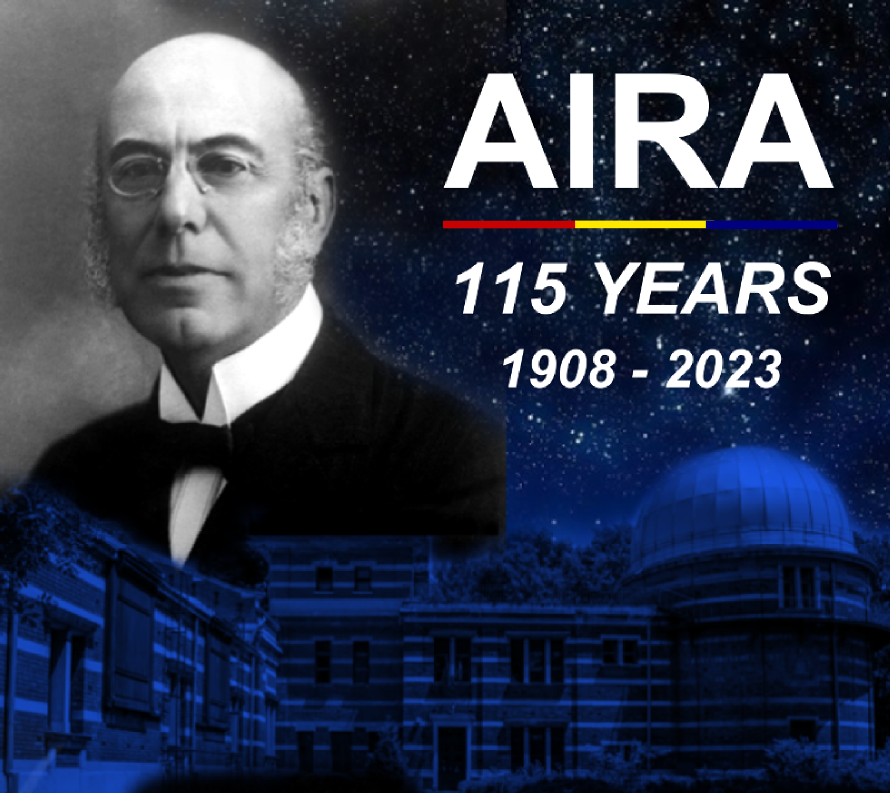Astronomical Institute of the Romanian Academy - 115 years of research
On the 1st of April 2023, the Astronomical Institute of the Romanian Academy (AIRA) celebrates 115 years of continuous scientific endeavour. The governmental Decree issued by the Minister of Public Instruction and Religious Affairs, Spiru Haret, on April 1, 1908, created the Astronomical and Meteorological Observatory of Bucharest - the present day Astronomical Institute of the Romanian Academy. Back then, at the turn of the XXst Century, that new scientific institution was developed as the next step of the Romanian astronomy after its previous pioneering age. Since those times of the Old Kingdom of Romania, the building up of scientific knowledge and infrastructure has been advancing constantly, in favorable periods or during economic, politically and military turmoil.
Inside the Main Building of AIRA, a true astronomy palace of Romania constructed in between 1908-1912, the Romanian scientists brought and sometimes even designed, a number of great astronomical instruments such as the refractory telescopes Prin-Merz (1912) and Gautier-Prin (1926), the Zeiss Transit Instrument (1953), the Zeiss solar refractors (1957-1958), the Cassegrain Telescope (1964), the precise vacuum dome fundamental pendulums Le Roy (1930) and Riefler (1956), or the massive quartz clock Rohde & Schwarz (1967), large photographic equipment such as the camera AFU-75 (1970).
Always in the scientific service of our country, the Romanian astronomers calculated and reported for decades the Legal Time of Romania by studying the Earth’s rotation, our primordial clock.
During 1908-2023, the calculating and computing hardware used here by the astronomers, evolved from the old Odhner and Mercedes mechanical calculating machines to the present day AI scripts and reduction algorithms developed indoor at AIRA, running on a super-computer with hundreds of cores and as big as a medium-sized office.
In 1908, on the astronomical side, the Bucharest Astronomical and Meteorological Observatory had a 16 square meters Meridian Hall that hosted a 1893 Geneva-made refractory telescope, and another Bardou refractory telescope, working together with a few precise clocks. Today, AIRA has a vast human operated and AI robotic infrastructure in astronomy covering hectares of scientific parks and development platforms, that is composed of directly or remotely operated telescopes like those in Berthelot, Cluj-Napoca, Bucharest and Timișoara Astronomical Observatories, the MOROI network of all-sky cameras spread all over the territory of our Motherland, never falling asleep, stellar investigating hardware, algorithms and protocols, starting with our Sun, in various types of spectrum radiation from visible to radio and up to the advanced mathematical models. AIRA is nowadays dynamically integrated with the ESA projects and space missions flow of data.
Today, the former scientific research facilities such as the Meridian Hall or the Equatorial Dome, where the old instruments are preserved, are visited every year by thousands of children and adults. They hear and see with amazed eyes the story of the achievements of Romania in astronomy and of generations of scientists led by Nicolae Coculescu, Gheorghe Demetrescu, Ella Marcus, Călin Popovici, Constantin Drâmbă and others. They also understand that this was a national effort in astronomy and beyond it, a story of struggle, dedication, perseverance, heroism and humanity of the Romanian astronomers who fought in the scientific field as well as on the military battlefields under the flag of Romania.
Published on: Apr 01, 2023
